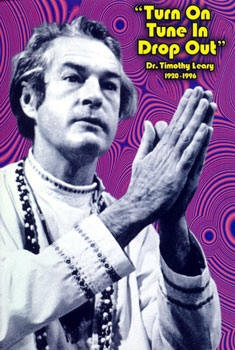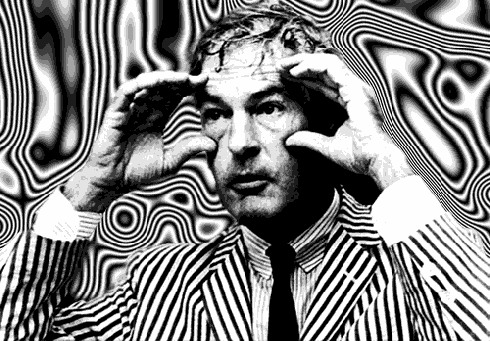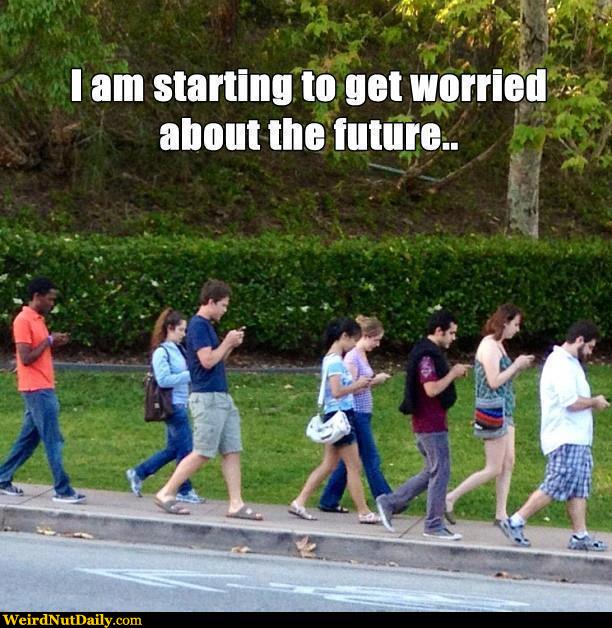|
IT
“Flowers
produce seeds and there are
millions of seeds from the flowers of
the 1960s. Every aspect of American society is being run by the seeds
of the
flowers of the 1960s. We are the establishment and we are doing a good
job.”
Timothy Leary
~~~~~~~~~~~~~~~~~~~~~~~~~~~~~~~~~~~~~~~~~~~~~~~~~~~~~~~~~~~~~~~~~~~~
In
the
1960s, many soon-to-be famous
musicians flooded into Laurel Canyon in the foothills above Santa
Monica.
A vibrant music scene emerged almost overnight on the nearby
Sunset
Strip. Record producer Terry Melcher recalled, “kids came
from
everywhere. It just happened. One day you couldn’t drive anymore. It
was, like,
overnight – you couldn’t drive on the Strip.” Clubs sprung up
on the
Sunset Strip and major record labels sprang into action. So did
the
mainstream press. Since that time, theories have emerged about
what was
happening there and why it began so quickly. One popular theory
points
out the blood relations of many of the musicians and their military
families,
positing that corporate interests behind the war in Vietnam could have
collaborated with government to cultivate a vibrant counterculture,
rooted in
"muse-ick", psychedelics and new age consciousness in order to
distract and absorb some of the dissenting pressure coming from the
radical
left. Where did all the LSD come from? Who paid for it?
Did
The Brotherhood of Eternal Love, aka the "hippie mafia," who produced
and distributed their own brand of LSD called "orange sunshine"
really have CIA connections? Did Timothy Leary's "Harvard
Psilocybin Project" in the early 1960s have connections on high? Was Owsley Stanley, the LSD
supplier
for the Merry Pranksters, Grateful Dead concerts, "acid tests" and
events like the the human be-in of 1967, the Monterey Pop Festival and
Altamont
Free Festival just a man acting alone? As popular as LSD was, not
to
mention illegal (in Ca.) after 1966, it could probably have fetched a
pretty good
price on the street. Yet LSD was often passed out free of charge,
as if
it grew on trees, begging the question of who was footing the bill.
It
was speculated, even by counterculture insiders, that the mass
doping
was part
of a CIA plot to neutralize dissent, especially after it became known
that the
CIA was behind the MKULTRA program in which counterculture icon Ken
Kesey was
involved. In the documentary, "Hippies,” former
Digger,
Peter Coyote, said, “Some on the left even theorized that the
hippies were
the end result of a plot by the CIA to neutralize the anti-war movement
with
LSD, turning potential protestors into self-absorbed naval-gazers.”
Yippie founder, Abbie Hoffman, said “There were all these
activists, you know, Berkeley radicals, White Panthers … all trying to
stop the
war and change things for the better. Then we got flooded with all
these
‘flower children’ who were into drugs and sex. Where the hell did
the
hippies come from?!”

And
there was an even more interesting and
soon to be more culturally relevant component to all this several
hundred miles
north of the Laurel Canyon scene. In
the Silicon Valley, just south of San Francisco, a true revolution
was
underway, a revolution in which LSD also factored in heavily. Ironically, it was prominent
counterculture intellectuals, and their adamantly anti-technocratic
core
values, who would play a major role in bringing the next state of
the art
technology, internet technology, to the mainstream. IT was
looked upon
by the counterculture as far more than
just another
step in the march
of
technology. They saw it as a way of promoting their egalitarian
worldview
and promoting the power of the people.
Much of the early early computer
research
was done at the Stanford Research Institute (SRI). During this
same
period, Stanford was also one of the many universities around the
country
where the CIA was conducting covert and illegal mind control
experiments using
psychedelics, including LSD. One such experiment was the
Harvard
Psilocybin Project. During the fall of 1960, Aldous
Huxley was
appointed visiting professor at the nearby Massachusetts Institute of
Technology
in Boston and he became involved with the Harvard Psilocybin Project
which
began that same year. Other participants included Timothy Leary,
Richard
Alpert (Ram Dass) and others. In 1954, Huxley had theorized in
"The
Doors of Perception" that there are metaphorical doors in the
human
brain that may be opened by properly
administered psychedelics, greatly
facilitating consciousness expansion and self-discovery. Huxley
was recognized as a man of remarkable intelligence. Author
Jay Stevens
described Huxley as "probably the brightest young literary man of
his
generation in any of the western countries” (1) and that "The
fall
of 1960 was an equivocal time for Aldous Huxley. His lectures on
visionary
experience were jammed. And not just by students. The public ones at
night caused traffic problems more
appropriate for the Harvard-Yale game."
(2) It's no wonder that Huxley was sought out by Leary to
participate in
the 1960 Harvard project. Huxley was also enthusiastic about
working
with Leary. As Stevens put it, "For Huxley, Tim Leary was like
a
strong breeze in a sail that had started to sag. His enthusiasm,
his
theoretical orientation, and most of all his connection with Harvard,
made him
the perfect man to advance Aldous's psychedelic scenario.”

The "most dangerous man
in
America," according to President Richard Nixon.
But
concerns were raised about the safety
and legitimacy of the project and it was shut down. Leary and
Alpert,
both rising academic stars, would be released from the university the
following
year. Leary and Alpert then began seeking a better place to
pursue their
newfound fascination with psychedelics. They would go on to
continue
their experiments in Millbrook, New York, but went their separate ways
shortly
thereafter. Each spent their own time seeking spiritual
enlightenment in
India. Alpert returned from India with a new name, and would
henceforth
be known as "Ram Dass". Leary went on to become involved
with the Brotherhood Of Eternal Love in Laguna Beach, California, an
organization that produced and distributed "orange sunshine", their
own brand of LSD. Huxley would become involved with the Vedanta
Society
of Southern California, a society that was devoted to spiritual
activities.
(3) Huxley, Leary and Alpert would all go on to become involved
with the
Esalen Institute in Big Sur, California. Founded in 1962, Esalen
was
intended to be a center for the study and development of human
potential, and
is still regarded by many as the geographical center of the human
potential
movement. Besides Huxley, Leary and Alpert, past teachers include
Buckminster Fuller, B.F. Skinner, Deepak Chopra, Albert Hofmann, Stan
Grof,
Arnold Toynbee, Ken Kesey, Abraham Maslow, Jerry Rubin, Gary Snyder,
Alan
Watts, and manyothers. LSD was a tool often used
at Esalen to
promote
consciousness expansion. As one participant put it;
"Esalen
provided the philosophy for the Hippies, but before the Hippie thing
could
catch on, they needed to find a catalyst and a sacrament. Well, Ken
Kesey
turned out to be the catalyst and Timothy Leary and Stanley Owsley
provided the
sacrament, namely the LSD. Our country has never been the same since.
It's kind
of hard to believe that all of this came out of an
obscure little camp
out in
the woods that only us starving artists and philosophers know about.
The Esalen
Experience, they call it, experience being the key word, for
it's the
experience that counts. For example, it's not good enough just to
read The
Doors of Perception. What you have to do
is experience what's behind the doors of
perception. In
other words, you have to take the acid and have the experience." (4)
A utopian
social vision was emerging in the counterculture which was centered
around a
strange brew of forces, which in some cases seemed at odds with one
another; human potentialism, a sort of back to the earth
tribalism, and
modern technology, mind expanding
psychedelics, especially
LSD.
Nowhere was this vision better encapsulated than Stewart Brand's Whole
Earth
Catalog which launched in 1968. In the words of
author Theodore Roszac, this strange
brew of forces had a "hybrid taste,” elaborating that;
Alongside
the rustic skills and
tools, we discover high industrial techniques and instruments: stereo
systems,
cameras, cinematography, and, of course, computers. On one page the
'Manifesto
of the Mad Farmer Liberation Front' (Wendell Berry's plea for
family-scaled
organic agriculture); on the next, Norbert Wiener's cybernetics."
(6)
Turner echoes
these Sentiments;
"In
1968 Brand founded the Whole Earth Catalog in order to help
those
heading back to the land find the tools they would need to build their
new
communities.
These items
included the fringed deerskin jackets and geodesic domes favored by the
communards,
but they also included the cybernetic musings of Norbert Wiener and the
latest
calculators from Hewlett-Packard. In later editions, alongside
discussions of
such supplies, Brand published letters from high-technology researchers
next to
firsthand reports from rural hippies. In the process, he offered
commune-based
subscribers a chance to see their own ambitions as commensurate with
the
technological achievements of mainstream America, and he gave
technologists the
opportunity to imagine their diodes and relays as tools, like those the
commune
dwellers favored, for the transformation of individual and collective
consciousness. Together, the creators
and readers of the Whole
Earth
Catalog helped to synthesize a vision of technology as a
countercultural
force that would shape public understandings of computing and other
machines
long after the social movements of the 1960s had faded from view."
"In
theWhole Earth Catalog era, these networks spanned the worlds of
scientific research, hippie homesteading, ecology, and mainstream
consumer
culture. By the 1990s they would include representatives of the Defense
Department, the U.S. Congress, global corporations such as Shell Oil,
and
makers of all sorts of digital software and equipment." (7)
Brand
credited Buckminster Fuller for the catalog's inspiration.
Marshall
McLuhan was also a key influence. He and Fuller
both helped
Brand to "imagine a new synthesis of cybernetic theory and
countercultural politics,” as author Fred Turner put it. And
according
to Turner, McLuhan had "twin interests in cybernetic
approaches to communication media and tribal forms of social
organization”
that "linked both the new tribalism and its promise of a return to a
prebureaucratic humanism to a more cybernetic rhetoric of human machine
entanglement,” adding that;
"In
McLuhan's view, the
individual human body and the species as a whole were linked by a
single
nervous system, an array of electronic signals fired across neurons in
the
human body and circulating from television set to television set, radio
to
radio, computer to computer, across the globe." (5)
Brand
had
other important influences. He first took LSD in December of
1962, and
began hanging out with Ken Kesey and the Merry Pranksters at
Kesey's home
near Stanford. He later began collaborating with Kesey and the
Pranksters
for events like the Trips Festival in 1966, which catapulted Brand to
the fore
as entrepreneur. By this time, about 8 years had passed since
Kesey had
volunteered as a test subject in the CIA's MKULTRA
program, presumably
unaware that it was a CIA program exploring mind
control. Theodore Roszak describes the role of LSD in
the
counterculture social vision;
"The
assumption underlying these mass distribution efforts was blunt and
simple: dope saves your soul. Like the Catholic sacraments,
it takes
effect ex opere operato -- by its very ministration. Once
this
promise crossed wires with the growing interest in oriental mysticism,
the psychedelics
had been launched as a cultural force. It seemed clear that the
research
laboratories of the western world -- including those of the giant
pharmaceutical corporations -- had presented the world with a
substitute for
the age-old spiritual disciplines of the East. Instead of a lifetime of
structured contemplation, a few drops of home brewed acid on a vitamin
pill
would do the trick. It was the short cut to satori."
"Here,
I suspect, is the
reason why
Buckminster Fuller, Marshall
McLuhan, and the
other technophiliac utopians struck such a responsive chord among the
countercultural young. Acid and rock had prepared an audience for their
message, and prepared it in an especially persuasive way that undercut
the
cerebral levels. ... Combined with the music
and the
lights in a total assault upon the senses, they can indeed make
anything seem
possible."
"This
experience, purchased out of the laboratories of our industrial
culture,
somehow allies its disciples with the ancient, the primitive, the
tribal. Its
proper use is among huddled comrades, gathered in a sacramental hush in
park or
field, on the beach, in the wilderness, or the enfolding darkness of an
urban
den. Here, then, we find the same striking blend of the
sophisticated-scientific
and the natural-communal that Buckminster Fuller claimed for the
geometry of
the geodesic dome, and that the Silicon Valley hackers would eventually
claim
for the personal computer. 'This generation absolutely swallowed
computers
whole, just like dope,' Stewart Brand observed in a February 1985
interview
in San Francisco Focus Magazine." (8)

In
the late
1970s, the Stanford Research Institute was helping the Ronald
Reagan presidential campaign appropriate the ethos of the
counterculture
to make Reagan the 40th President of the United States. SRI
developed a
research methodology called "VALS" ("Values,
Attitudes and Lifestyles") which helped both corporate and
political marketing
campaigns through profiling, as documented in the 2002 film, The
Century of the
Self, by Adam Curtis. The film specifically names countercultural
nexus,
the Esalen Institute, as well as Maslow's hierarchy, as research topics
at SRI.
It was the profiling of the so-called "inner directed"
individuals of the counterculture that the Reagan campaign would be
designed
around and would end up making the difference in the election and
give
Reagan the presidency, an irony which surprised even SRI
researchers. (9)
Given Reagan's track record as Governor of California, this
really
was an amazing feat. By the time Reagan was elected, SRI had
already
begun work for the Department of Defense on a project that would later
become
"Star Wars" program, proposed by President Reagan on March 23,
1983. How prominently IT factor in to such exercises in social
engineering? How much would it would likely factor in today.
More
recently
(2005), in his Stanford University commencement speech, Steve Jobs
would
compare Stewart Brand's Whole Earth Catalog to the internet search
engine Google, echoing Timothy Leary the previous decade and his
newly
modified, slogan; "turn on, boot up, jack in."
Digital be-ins (10) would carry the tradition forward into the new
century, "with a mission to carry forth the
ethos and values
expressed at the 1960's Human Be-In, and bring them
into the world
of multimedia and Internet technology."
It
served a role through the 1990's as a venue for the San Francisco
Bay
Area's community of new media pioneers to socialize and
exchange
ideas. Cyberculture became the focal point of the gatherings.
However, producer Michael Gosney also brought in key figures from the
Human
Be-In such as Allen Cohen, Chet Helms and Timothy
Leary to maintain the 60s influence, as well as 60s icons Ken
Kesey, Ram
Dass and Wavy Gravy. In the early years, it drew major
companies as sponsors, such as Apple, Microsoft, Adobe
Systems and Kodak, while at the same time staying an
underground
party.
 
It
is
somewhat strange to see technology and access to information suddenly
in the
hands of so many people when not all that long ago this would probably
have
been looked upon as threatening to established economic and political
interests.
Why is this no longer the case? Corporate and/or political
power
has the ability to keep discoveries that threaten the status quo out of
sight.
So why the about face? The intrinsic threat associated with this
technology must be outweighed by some sort of benefit and probably
several. One of the most important of
these has to be a social transformation, a sort of new cultural
operating
system which corresponds to the transformation from the industrial age
to the
post industrial age of information where knowledge, the production of
ideas and
information sciences represent a new form of capital, and one for which
access
is more broad and therefore thought of as more egalitarian. But does broad access necessarily translate
into a more egalitarian society? Or is
it precisely such broad access which disempowers the masses in this
case?
Though
IT
today can be put to many good uses, it is the consummate slippery
slope. This technology doesn’t just make transgressions of
good use
of time more likely. It makes them practically inevitable.
You log
on to order some new supplies for your business and the next thing
you
know you find yourself reading some obscure article in world news for
no other
reason than that it was easy. Our browsers mysteriously seem to know
exactly
what your interests are, placing perfectly tailored ads right at our
finger tips. How much of this is, to borrow from Aldous
Huxley and
his "Brave New World Revisited," “ for the purpose of
preventing people from paying too much attention to the realities
of the
social and political situation,” or worse?

Suffice
it to
say that it might not be such a good idea to have a one stop shopping
portal,
not to mention bona fide oracle, in the same place that we make
important
communications and transactions. But never mind for a moment that
this
technology represents the mother of all distractions that almost makes
daytime
television look good. Never mind that it provides the infrastructure
for
corporate marketers to surveil your keystrokes and create profiles
for marketing purposes, and for the government to carry out newly
adopted
spying protocols on its citizenry. Those
are serious issues to say the
least, but they’re also more
obvious. What isn’t so obvious are the
insidious changes in our own values. What of the
ever growing
disparity between what we ourselves believe is a sane amount of time to
be
engaged with this technology and the actual amount we spend? The
usual
media, tabloid and pop culture distractions are far more accessible.
Consumerism is facilitated exponentially. We
communicate with friends and family constantly, sometimes
simultaneously, even though there is no real need to. Obscure
global news
that used to seem less relevant somehow seems more important. Broad access imbues a sense of relevance on
numerous levels. How often do we find ourselves spending an
amount of
time engaged with internet technology that even we ourselves
characterize as
irrational? By acting this way over and over again,
aren’t we
reinforcing this mindset and incorporating it into our belief system? Where might this sort of behavior be leading
us?

This
broad
access also facilitates the dissemination of various forms of
propaganda. The same media which has
always encouraged
religious division and the toeing of political party lines now extends
its
reach. All manner of "independent media” take on a bigger role,
taking on a very convenient, presumed air of legitimacy. But
how
many such media outlets are controlled, funded or otherwise co-opted by
the
mainstream, corporate media, capitalizing on the broad scope of
technology? How often do we see
political or religious discussions assuming the usual emotional tones
that come
across as blatantly subjective and irrational, on both sides of
the tracks
equally? Social conditioning and
shaping the public mind has never been easier. Its difficult to
imagine a better tool for disseminating misinformation, fashioning
a false
consensus or softening the target for what would otherwise be very
unpopular
legislation and reform.
But
it's not
just ideas that may be represented falsely. How easy it would be,
with
the apparatus of IT in place, to falsely incriminate any person or
group deemed
a threat, at the behest of a single individual - the President, thanks
to the
recently broadened powers of the unitary executive. So while the
technology in question may very well empower ordinary
people to some
degree,
the egalitarian billing it received was either grossly misrepresented
or
woefully shortsighted. Though Roszak is certainly correct in
calling IT
a “mixed blessing,” there is little doubt which class of society
benefits the most here;
"Even
when the Internet was nothing more than a restricted military messaging
system,
enthusiasts envisioned a day when politically restive millions would
network
their aspirations and talents via computer. All they had were
funky
little CPUs that scrolled sickly green letters and numbers at a snail's
pace
across a 6-inch screen, but that was enough, they said, to build the
New
Jerusalem. ... The computer has brought us
convenience and
amusement, but, like all technology, it's a mixed blessing. Far
from
smashing Big Brother, computers have given him more control over our
lives.
... We have watched high tech become the next
wave in
big-bucks global industrialism, the property of the crass and the
cunning, who
are no more interested in empowering the people than General Motors was."
(11)
"Similarly,
it now seems
abundantly clear that long before the personal computer has the chance
to
restore democratic values, the major corporations and the security
agencies of
the world will have used the technology to usher in a new era of
advanced
surveillance and control. ... It was an
attractive
hope that the high technology of our society might be wrested from the
grip of
benighted forces and used to restore us to an idyllic natural state. "
(12)
How badly do
we really need the information we are actively seeking out? Is our own assessment artificially inflated
by access to IT? Isn’t there something to
be said
for simply
being
settled and having some time to relax and just enjoy life?
Are we trying to assimilate too much,
too
fast? Does a society plagued by a temptation to connect with
the
flood of information
emanating from the press and the world
wide web stand any chance of organizing to create social change or even
just
getting along? What
good is all this
information if the underpinnings of society, on multiple levels, are
disintegrating, and in large part because our collective level of
infatuation
has grown to be reminiscent of moths around a porch light?
What
is
happening domestically echoes the global trend, and it’s one that is
enhanced
by technology; a reprogramming, the breaking down of old values
and
traditions to clear the way for new ones, the erosion of both national
sovereignty and personal freedoms to make citizenry more pliant for a
new
cultural operating system on a global scale. A cult of
information is
playing a leading role in wiping old hard drives clean and creating new
tributaries of control. Today, global events no longer feel like
the
distant events that they are. Local
communications with friends and family are vastly more numerous and
more
trivial. Suddenly we have a far greater responsibility, or so
it would
seem, to keep track of absurd levels of information.
Our collective level of distraction has
reached fever pitch.
We now have validation to devote large swaths of our time and our
mental
resources to things which would otherwise have been
deemed tangential or
at least not pressing. While all
such
things may well have some intrinsic importance, their perceived
importance has
greatly increased by virtue of nothing
more than the fact that they are
more
accessible, a direct result of technological “progress." Have
we ever
been more malleable as a group? To what degree is this because
of "the development of a vast mass communications industry,
concerned in the main neither with the true nor the false, but with the
unreal,
the more or less totally irrelevant,” to borrow again from
Huxley?


Recently
I went
into an eating establishment to get lunch, and literally everyone,
both
standing in line and already seated, was staring into some sort of
computer
monitor. If the amount of information the human mind can process
before
reaching sensory overload has ever been in question, then the day of
reckoning
has certainly arrived. Is this a positive development? Will
it make
us more happy and satisfied? Just how
much information, over any given time, is healthy? At what point
does it
become unhealthy? How many of us exceed our individual threshold?
How many exceed it by an enormous margin? What are we
giving up in
making time to stare into a computer monitor? What
is being displaced? Is it
good that a musician be encouraged to put away an instrument, or an
artist the
brush and canvas, in favor of the digital medium? While a digital
synthesizer is useful to a point, will it
ever sound as good as the
real
instruments that they emulate? And even if they could sound as
good, can
they even begin to match the experience of playing a real
instrument? And
how much gets put on the proverbial shelf today so that we can engage
with some
facet of IT that is only vaguely important, if that, by our
own
admission? I only hope that the
barrage
of information
emanating from the world wide web will
be used with the judiciousness that it
commands, so that our epoch does not go
down in history as a time
when human
behavior resembled that of lever-pressing lab rats.
Assuming we all would like to
maintain some semblance of
control in our lives, it may serve us well to recall what Huxley
forewarned;
"A
society, most of whose members spend a great part of their time,
not on the spot, not here and now and in their calculable
future, but somewhere else, in the irrelevant other worlds of
sport
and soap opera, of mythology and metaphysical fantasy,
will find it
hard to resist the encroachments of those who would manipulate and
control
it.” (13)
This
story is
full of ironies and oddities. First, the anti-technocratic ethos
of the
counterculture played a pivotal role in ushering in the next big
technology. Second, this was no
ordinary technology but a technological revolution. Third, LSD
would was
instrumental in the development of this technology.
Who knew? Last,
the same
Aldous Huxley who forewarned against the "the development of a vast
mass communications industry” had a brother, Julian Huxley, who
was
a lifelong internationalist and UNESCO's first Director General,
who
wrote;
"That
task is to help the emergence
of
a single world culture, with its
own
philosophy and background of ideas,
and
with its own broad purpose. This is
opportune, since this is the first
time in history that the scaffolding
and
the mechanisms for world unification have
become
available ... “ (14)
It
would be interesting to know exactly
what he meant by "unification" and "single world
culture," although I think it's becoming clearer everyday.
~~~~~~~~~~~~~~~~~~~~~~~~~~~~~~~~~~~~~~~~~~~~~~~~~~~~~~~~
Notes
1
- Jay Stevens -
http://www.youtube.com/watch?v=mbI4f1WvN9w
2 -
Jay Stevens, from "Storming Heaven: LSD
and the American Dream" p. 141
3
- http://en.wikipedia.org/wiki/Vedanta_Society_of_Southern_California
4
-
http://wild-bohemian.com/esalen.htm
5
- Fred
Turner - http://www.edge.org/3rd_culture/turner06/turner06_index.html
6
- Theodore Roszak, "From Satori
to Silicon Valley" - http://web.stanford.edu/dept/SUL/sites/mac/primary/docs/satori/taste.html
7
- Fred Turner - http://www.press.uchicago.edu/Misc/Chicago/817415.html
8
- Theodore Roszak, "From Satori
to Silicon Valley" - http://web.stanford.edu/dept/SUL/sites/mac/primary/docs/satori/short.html
9
- See BBC film, "The Century of
the Self"
- https://www.youtube.com/watch?v=eJ3RzGoQC4s; (scroll to
2:36:54. Strap yourself in.
10
-
http://en.wikipedia.org/wiki/Digital_Be-In
11
- LA Times (2004) - http://articles.latimes.com/2004/jan/28/opinion/oe-roszak28
12
- Theodore Roszak - http://web.stanford.edu/dept/SUL/sites/mac/primary/docs/satori/light.html
13 - Aldous
Huxley, from Brave New
World Revisited (1958) - http://www.huxley.net/bnw-revisited/
14 - Julian
Huxley, from
"UNESCO - It's Purpose and it's Philosophy" - http://unesdoc.unesco.org/images/0006/000681/068197eo.pdf
|
|